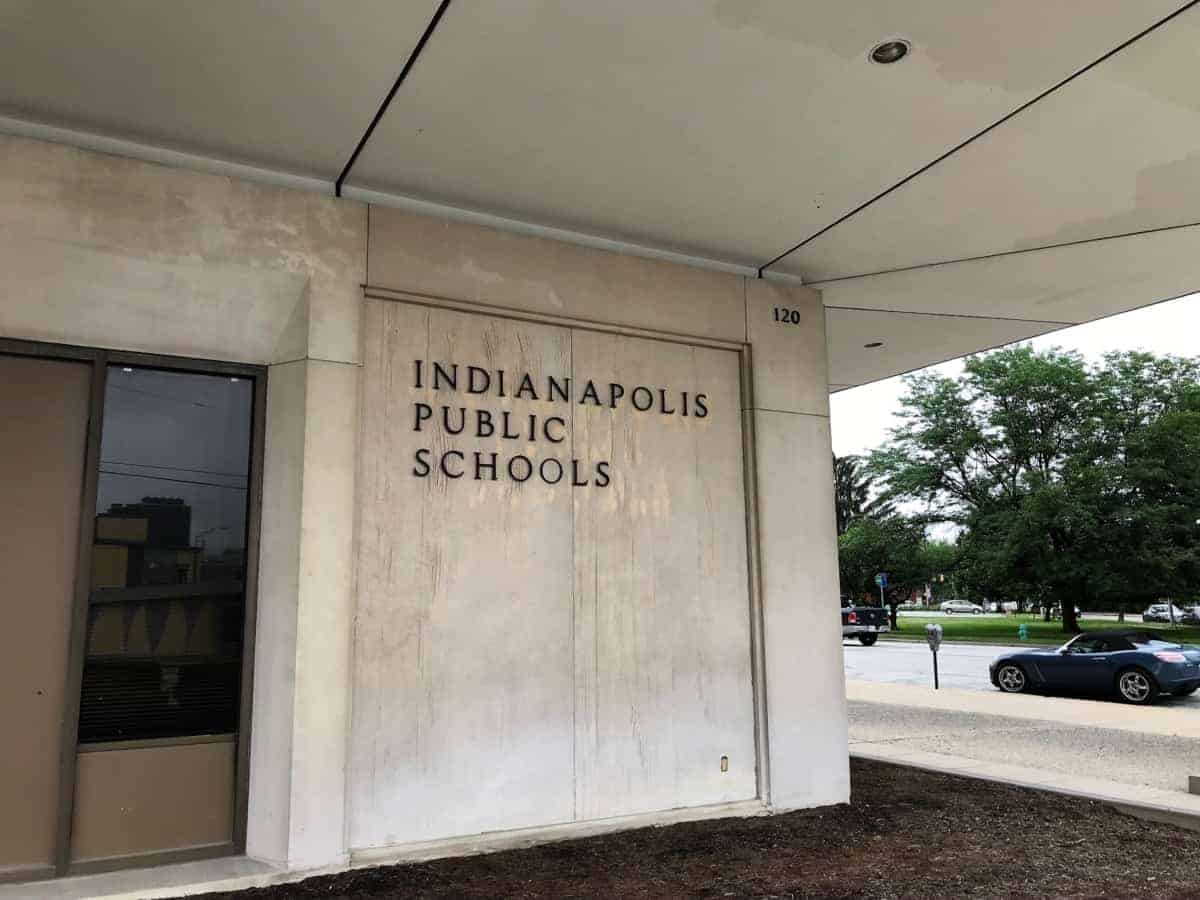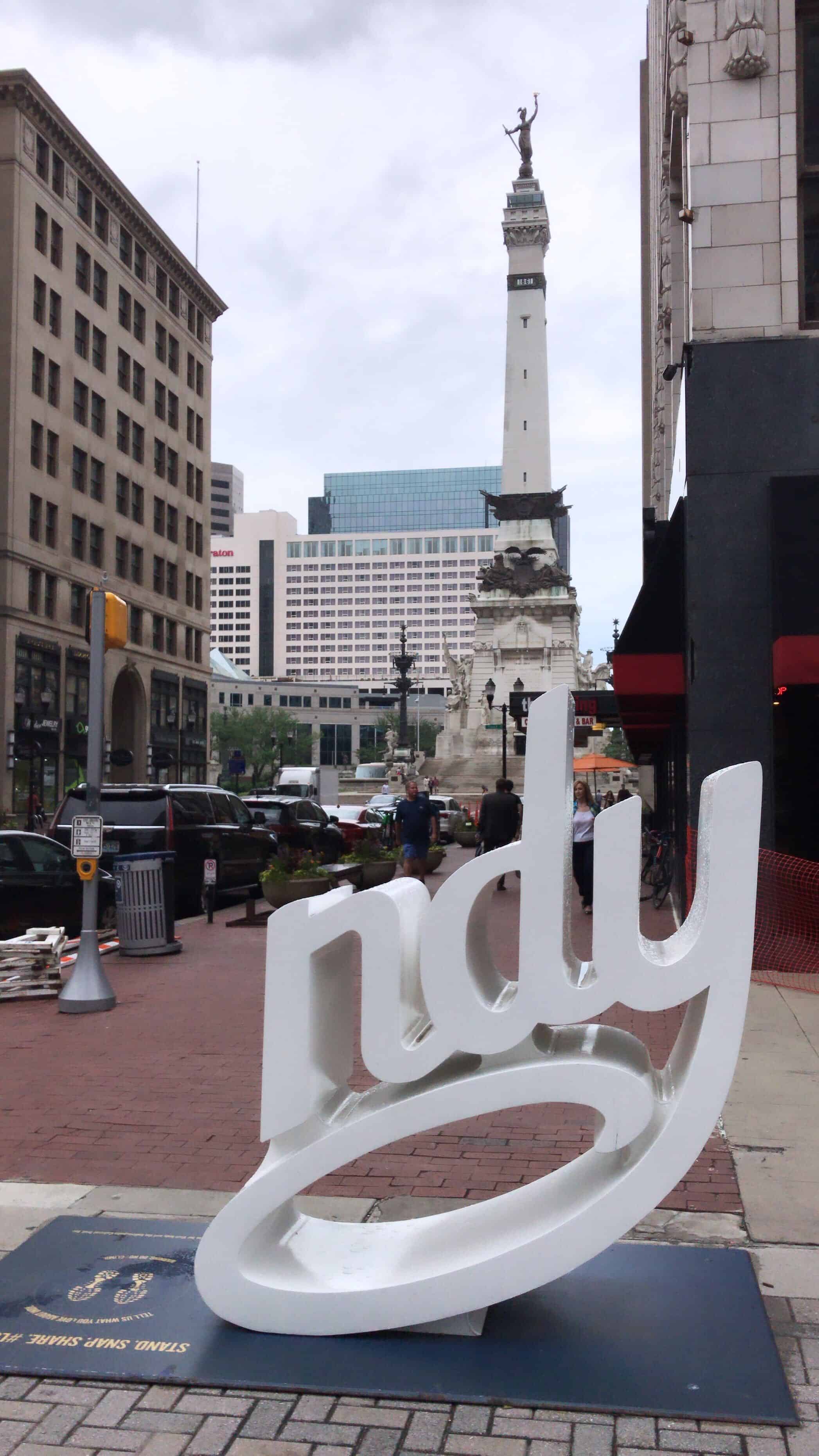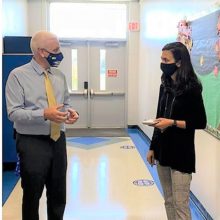
North Carolina is no stranger to school reform efforts that grant charter-like flexibility to traditional public schools in the hopes of turning them around. Since 2013, more than 100 low-performing North Carolina schools have gained Restart status, a program that allows recurring low-performing schools to adopt charter-like flexibilities. Last year, Rowan-Salisbury Schools became the state’s first renewal district, granting every school in the district charter-like flexibility.
But North Carolina is not alone. Across the country, cities like Memphis, New Orleans, Denver, and Indianapolis are giving added flexibilities to their schools. In Indianapolis, this effort is called innovation network schools.
On a recent trip to Indianapolis and in conversations thereafter, I interviewed district representatives, a school board leader, an innovation network school director, a representative from the mayor’s office, and nonprofit leaders to learn more about the model. Along the way, I heard about the importance of collaboration, trust, and a commitment to best serve the students of Indianapolis regardless of school type — be it a magnet, charter, traditional public school, or otherwise.
And while the innovation network is not without critics, its growth over the past five years makes Indianapolis one of the most interesting educational landscapes in the country.

During many of my interviews in Indianapolis, the history of charter schools and innovation network schools points all the way back to at least 1970, when the city of Indianapolis and Marion County consolidated — that is, everything except the school districts did. Today, Marion County has 11 school districts.
Another important moment occurred in 2001 when Indiana became the 38th state in the country to authorize charter schools and granted charter authorizing authority to the mayor of Indianapolis, among others. This marked a major milestone as Indianapolis became the first city in the country where the mayor has the ability to authorize charter schools, which are publicly-funded but privately-operated public schools.
For more on the background and history behind charter schools and innovation network schools in Indianapolis, explore this timeline.

Indianapolis Public Schools (IPS) is the largest school district by enrollment in Indiana with 31,478 students. Almost 75% of IPS students are black or Hispanic, and roughly 64% qualify for free school meals. As of the 2019-2020 school year, there are 21 innovation network schools serving roughly 9,000 students — or about a third of the IPS student population.
The first innovation network school opened in 2015 after then Gov. Mike Pence signed House Bill 1321 in 2014, legislation that was supported by then IPS Superintendent Lewis D. Ferebee and Indianapolis Mayor Greg Ballard. The schools can be charter schools or traditional public schools, but they are all granted charter-like flexibility, allowing them to operate with the authority to make decisions about all aspects of their school, both academic and operational. Innovation network schools are held accountable by IPS, and their tests scores, enrollment numbers, and other academic data are counted in the district’s metrics.
Schools in the innovation network have the autonomy to determine staff compensation, create new staff positions and hiring criteria, set start and stop times for the school day, determine the number of school days in a year, and more. They also have the flexibility to opt in or out of IPS academic and non-academic services, such as custodial and IT support. Teachers at innovation network schools are not employees of IPS or able to join the teacher’s union, but are instead employed by a 501(c)3 corporation.
Under this portfolio model, IPS oversees a collection of both traditional public schools and charter schools. Other cities, including New Orleans and Denver, also utilize the portfolio model. IPS’ one-pager on the network says this:
“The purpose of Innovation Network Schools is to allow our district, and schools within our district, greater flexibility to make decisions based on the specific needs of a school’s student body.”
There are four pathways a school can take to become an innovation network school:
- New: Schools that have not previously existed and are launching as innovation schools, some of which are also charter schools.
- Restart: Existing IPS schools that have been consistently underperforming based on student outcomes. The district makes the decision that the school will be restarted with an external charter partner.
- Conversion: Existing IPS schools that have a strong historical school performance or school leadership team that demonstrates both the organizational capacity and desire to transition to an innovation school. These schools don’t hold a charter but are granted charter-like flexibility.
- Charter: New or existing schools who hold a charter and desire to partner with the district in a more formal way. Generally, they also utilize district services like transportation, food service, or facilities, etc.
Here are a few of the key organizations in the innovation network schools landscape.
The Mayor’s Office of Education Innovation
The Mayor’s Office of Education Innovation is the main charter authorizer in Indianapolis and Marion County. Currently, the mayor’s office authorizes 41 charter schools — 13 of which are innovation network schools — that enroll more than 15,000 students.
The mayor’s office offers two application windows each year and typically receives one to three applications in each cycle. During the application process, applicants are asked if they want to be an innovation network school. However, the district’s process for granting innovation network status is separate from the mayor’s charter application process. The mayor’s office may grant a charter, but it’s up to IPS to decide if they want to partner with the school in the innovation network. More on that later.
The Indianapolis Charter School Board of the mayor’s office has the authority to grant or reject charter applications. The board consists of nine members, six of whom are appointed by the mayor of Indianapolis and three of whom are appointed by the president of the City-County Council. If the board decides to grant the charter, the initial term is usually seven years.
According to Patrick McAlister, director of the Office of Education Innovation, mayoral-authorized charter schools undergo an oversight and accountability process every year that includes the following considerations.
- Academic performance: A combination of state data and locally created data is used to assess students’ academic performance.
- School finance: Annual audits from independent certified public accountants are used to assess the relative financial health of the school. These audits are also posted to the state website.
- Governance: All of the mayoral-authorized charter schools are governed by nonprofit boards. Those boards hold the other side of the charter agreement and the mayor’s office assesses the extent to which the boards are providing academic and financial oversight to the school.
- Site visits: Every other year in the initial charter term, and during year three and year six thereafter, site visits are held. Approved evaluators visits schools and provide oversight on what’s happening, such as if schools are complying with special education laws. Their evaluation reports are submitted directly to the mayor’s office.
Mayoral authorizing is incredibly unique nationwide — and, according to McAlister and others, it ushers in some benefits. For example, the mayor’s office can provide additional layers of support to the schools it authorizes, such as answering questions about building permits or public safety — the bread and butter of local government.
Brandon Brown, CEO of The Mind Trust, said another important benefit of mayoral authorizing is the ability of the public to hold the mayor’s office accountable for high-quality, rigorous authorizing of charter schools.
“The mayor of Indianapolis has been such a high-quality authorizer through three consecutive mayors: one Republican, two Democrats. And we think that’s because the mayor of Indianapolis is an elected official who is directly held responsible by his or her constituents,” said Brown.
“And then folks actually have a vote once every few years around whether or not they continue their job. So when I hear that charter schools are not held accountable, I think that might be true in some places across the country — it’s just objectively not true in our city.”
Indianapolis Public Schools and Innovation Network Schools
Jamie VanDeWalle, portfolio officer for IPS, manages the team that oversees the contractual relationships between the 21 innovation network schools and the district. With 13 of the innovation network schools being mayoral-authorized charter schools, the district and the mayor’s office also work closely with one another.
Every August, IPS opens a call for interest in the innovation network, allowing both existing IPS schools that want to convert to innovation status and outside charter schools that want to join the network to express interest. After an initial vetting and interview process, schools are invited to apply for innovation network status.
If the school is also working to gain a charter, their application to the charter authorizer is often due around the same time, and the two applications look similar. Formal applications are submitted in November, followed by another set of interviews. The final decision rests with the IPS Board of Commissioners.
Every innovation network school holds an innovation network agreement with IPS which vary depending on the school’s unique situations. For example, innovation network schools can opt to use district resources — like custodial staff, food services, and IT support — and then reimburse the district for those services. Or, they can opt out and use a different vendor. In some cases, innovation schools can gain access to IPS buildings or receive additional funding from the district. These agreements also outline the rules for termination of the agreement based on factors like academic performance or bankruptcy.
Michael O’Connor, president of the IPS Board of Commissioners, said the board’s core beliefs are that every neighborhood has the right to a high-quality school and every family has the right to access to a world-class education. Innovation network schools, he said, are one of many tools the district is using to ensure access to a high-quality education for every student.
“The first thing we have to think about is every kid that’s in education in a public setting, whether they be charter, innovation network school, autonomous school, or traditional school — they’re our kids. We have a responsibility to make sure it’s working for them,” said O’Connor.
The Mind Trust
The Mind Trust is a nonprofit organization based in Indianapolis that was founded in 2006 by former Indianapolis Mayor Bart Peterson and David Harris, one of Peterson’s policy advisors who first built and ran the mayor’s charter school office. The group focuses on three main aspects of work: growing great schools, supporting great schools, and engaging the community.
After House Bill 1321 passed and allowed for the creation of innovation network schools, the Mind Trust launched the Innovation School Fellowship, a one or two year incubation experience where school leaders from Indianapolis and around the country have the chance to design a school from the ground up with ongoing support from The Mind Trust. Brown said the fellowship was designed to offer an implementation strategy to support the innovation network schools legislation.
“There’s a flawed notion that if you recruit and resource an exceptional leader, then you can get out of their way and just assume that they’re going to flourish,” said Brown. “Even exceptionally transformative leaders need intentional support.”
Fellows have the opportunity to visit high-performing schools across the country and receive executive coaching in non-instructional practices like managing a budget and working with a board of directors. They also spend time engaging with community members to gather feedback that informs their school design. According to Brown, the cohort of both year one and year two fellows is usually between nine and 11 individuals, and an average of six schools are launched from the fellowship each year.
Brown said he is most proud of the fellowship’s record in recruiting fellows of color who go on to hire teachers that reflect the demographics of their students and community.
“One common criticism of charter schools across the country is that oftentimes they’re outsiders who don’t really reflect their kids. The work here is a locally driven effort where we’re also able to recruit great leaders from across the country who do reflect our kids,” said Brown. “And I think the result of that has been high-performing schools that have deep trust in the community.”
The Mind Trust also supports the fellows in working with both the mayor’s office and IPS as they navigate the charter authorization and innovation network school process. McAlister said the mayor’s office is in regular communication with The Mind Trust about the work the fellows are doing.
“We work very directly with the fellows so they understand what they’re coming in for when they apply for a charter. Any collaboration is difficult … but having groups of people who share common values around equity is really, really important to driving this work forward in Indianapolis,” said McAlister.

What the timeline above doesn’t show is the network of relationships and trust between IPS, the mayor’s office, and the Mind Trust that are essential to the success of innovation network schools. According to Brown, as the charter school sector grew in Indianapolis from 2001 to 2014, IPS and charter schools largely held an antagonistic relationship. While the passage of House Bill 1321 started to alter that relationship, the shift was not immediate.
“This is not something where the law passed, and then everybody was like, oh, we’re all friends, let’s sing Kumbaya. This is hard work over time. And there’s a lot of maintenance work that has to happen every single day,” said Brown. “You can’t erase two decades of mistrust in one or two weeks. You have to be really diligent, and you have to continue to focus on building and maintaining authentic relationships across sectors.”
Beyond strong relationships, Brown also said these four elements have to be in place for innovation network schools to thrive:
- A school board that is focused on school quality and not school type.
- A transformational superintendent who is willing to make hard decisions.
- A legal structure that creates incentives for there to be collaboration across sectors.
- An implementation strategy that harnesses the power of the legal structure to create high-performing schools.
For O’Connor, a key aspect of the innovation network schools model is the real autonomy that it provides for principals to function as the CEOs of their schools. With that degree of autonomy comes great responsibility — something O’Connor said not every principal is interested in or prepared for. But, with the right school leader in the building, O’Connor believes that giving principals more autonomy is a crucial first step in creating high-quality schools — regardless of if the school is in the innovation network or not.
Another important aspect of the model’s success is the unified enrollment process which increases transparency and equity in the school choice process. EnrollIndy is a nonprofit organization governed by IPS, the mayor’s Office of Education Innovation, and the Indiana Charter School Board — a state entity that authorizes a handful of charter schools in the district. Those three entities each have seats on EnrollIndy’s board of directors that appoints the director of the organization.
EnrollIndy’s OneMatch application includes neighborhood, magnet, charter, and innovation network schools. Rather than filling out separate applications for each school they’re interested in, families rank their school choice priorities and the system provides them with one match, avoiding waitlists or multiple matches. Seats are awarded based on a lottery and the priorities a student qualifies for, such as proximity and sibling enrollment.

Although innovation network schools have continued to grow over the last five years, the model is not without challenges. During my interviews, questions about the model were raised that warrant future research and consideration:
- Innovation network schools run by charter operators are held most accountable by their nonprofit boards, creating a decentralized governance model. Does this result in less public visibility and accountability? Do parents know where to turn with questions or concerns?
- Charter schools have to be granted a charter before finding a building in which to locate their school. Are schools still able to locate in the community they intend to serve? Or do they end up locating elsewhere due to a lack of adequate facility options?
- With smaller school sizes and limited budgets, are innovation network schools able to deliver special education instruction to students who seek to enroll there?
VanDeWalle also acknowledged that this type of school reform can be tricky, especially with innovation schools under the restart model where an outside organization turns over a struggling school.
“When the district says, ‘This school has had four F’s in our accountability system in a row,’ and it’s trying to do something dramatically different, people hear different things. A lot of times it’s perceived as the district is going to come in and do something to me and they’re bringing in an outsider to run the school,” said VanDeWalle. “At the beginning, that’s very much how it felt.”
In 2017 and 2018, according to VanDeWalle, the district began taking steps to address the tension surrounding restart schools. First, the district worked to develop a more clear framework by which a school might be eligible for restart, allowing the conversation about the potential for restart to occur sooner rather than later. IPS also hosts forums and works to introduce the selected restart partner to the community.
“At the end of the day, parents just want to know where they’re sending their kid is a good place for them,” said VanDeWalle. “It’s important to keep it really relational and to find ways to engage the community early and often — you’re bringing them along rather than imposing on them.”

The data
When Superintendent Ferebee left IPS to become the Chancellor of D.C. Public Schools in January of 2019, a great unknown about his time in Indianapolis remained: What impact would innovation network schools have on student performance?
With a state test that has changed multiple times over the past few years, data on innovation network schools and insight into whether they are moving the needle on student growth and achievement is limited. Plus, under state law, new schools and schools that join the innovation network can opt to be graded for three years based only on growth rather than growth and achievement. For schools with high growth scores, this can boost the A through F letter grade assigned by the state.
But, two reports released in January — one by Stanford University’s Center for Research on Education Outcomes (CREDO) and another by the Indiana University School of Education at IUPUI — point to promising initial results for the city’s charter schools and innovation network schools.
The CREDO study found that students in charter schools and innovation network schools outperformed their traditional public school peers. Compared with traditional public schools, innovation network schools showed the equivalent of 53 additional days of learning in reading and 89 days in math.
The IUPUI study found that, overall, fourth- and fifth-grade state test score outcomes for students continuously enrolled in a mayor-sponsored charter school from kindergarten were better than state test score outcomes for students continuously enrolled in a traditional public school in the Indianapolis metropolitan area.
Despite the rapid growth of innovation network schools, only one new school will open under the model this fall. However, Aleesia Johnson, who officially became the new IPS superintendent in July, told Chalkbeat that the district’s strategy, including on innovation schools, will remain largely consistent.
A look to the future
As innovation network schools have continued to grow in Indianapolis over the last five years, many describe a shift in ideology from the belief that there was one right way to run schools to the belief that schools should serve every student in Indianapolis the best way they know how — and they should work together to accomplish that.
While critics view the innovation network and charter schools as competitors to traditional public schools, VanDeWalle believes that philosophy has largely changed.
“We acknowledge that the charter sector is here to stay whether people like it or not, and if we can do things like talk about where new schools are needed or how to improve outcomes together rather than in competition, the outcome will be better for students and communities,” said VanDeWalle. “When folks fight over governance models, all too often the individuals that suffer from that are the students and the families that we should all be serving.”
But O’Connor and others acknowledge that there’s still more work to be done when it comes to community engagement. During a recent search for the district’s next superintendent, the board held multiple listening sessions across the city to gather feedback on what people wanted in their new leader.
Community members said they understand the need for school reform, but feel their voices aren’t being heard in the process. They asked for more explanation about what’s happening to schools, why it’s happening, and how it’s going to help.
“We have a lot of education work to do much sooner than we were doing it. We have a lot of engagement to do much sooner than we we’re engaging,” said O’Connor. “And the good news is, parents want to be involved in these decisions. And so we have to create channels for that parent involvement.”
In the future, O’Connor believes that IPS has the potential to provide a model of education reform that can be replicated by other urban areas.
“If we maintain our commitment to reinvent a process where we can make education work … we are of the right size that it can be done by others,” said O’Connor.
For districts hoping to tackle similar reform efforts, VanDeWalle offered this advice:
“It’s just so important that every party involved maintains this outlook of optimism and possibility and also that part of the partnership is a shared understanding that things won’t always go amazingly. School is hard, large districts are complicated, and when you try to bend what traditional boundaries are, it complicates things even further. It takes time and a lot of persistence. But it’s worth it.”

